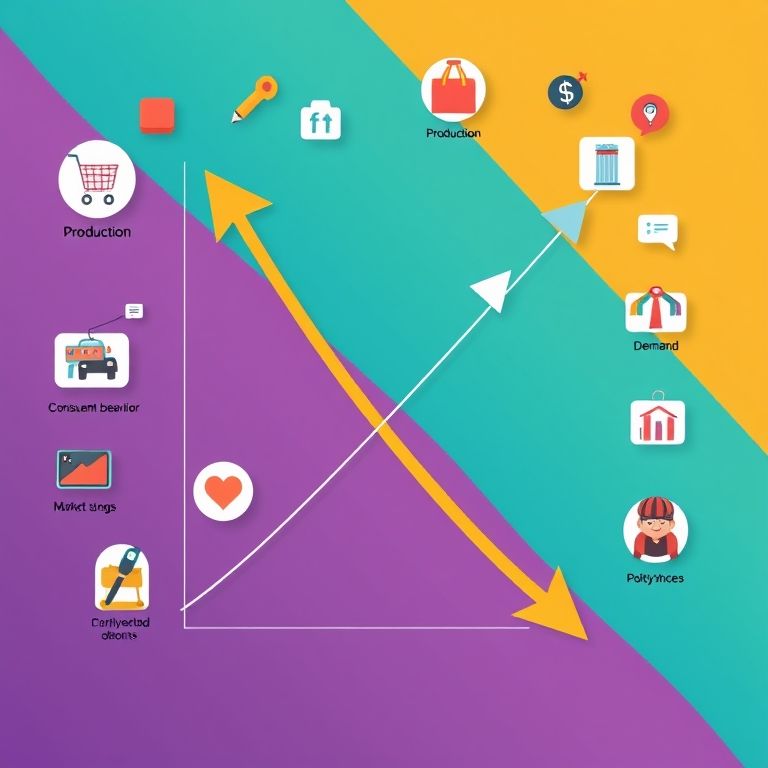What causes supply and demand imbalance?
What causes supply and demand imbalance?
Introduction
In markets you rarely see perfect balance between buyers and sellers. Imbalances show up as price gaps, sudden shifts, and crowded trades that move faster than anyone can shout “buy” or “sell.” The forces are real across assets—from forex and stocks to crypto, indices, commodities, and even options. This piece looks at what sparks those swings, how prop traders and DeFi players read them, and what to watch as technology and AI reshape the game.

Root causes of imbalance
- Information gaps and latency: when data arrives unevenly, some players react sooner, creating short-lived pressure before the rest catch up.
- Price frictions: bid-ask spreads, order delays, and execution costs dampen or exaggerate moves, especially in thin markets.
- Supply shocks: weather, logistics bottlenecks, or production hiccups can tighten availability faster than demand can reprice it.
- Demand surprises: seasonal peaks, policy shifts, or macro news can flip the mood from cautious to ravenous overnight.
- Inventory and stockouts: traders chase scarce inventories, lifting prices as buyers scramble for scarce goods.
- Speculation and leverage: fast-money flows amplify moves when traders bet on momentum or hedging needs collide with crowd psychology.
Market mechanics in action
Markets are a web of liquidity provision, risk appetite, and timing. Deep order books ease big moves; shallow ones magnify them. Across venues, arbitrageurs chase price convergence, while latency-sensitive desks front-run news with rapid algos. The result is a dance where supply and demand impressions diverge briefly, then re-converge as new information spreads.
Asset class dynamics
- Forex: central bank talks and cross-border flows can squeeze a currency’s demand, creating sudden moves.
- Stocks and indices: earnings surprises or supply chain updates flip expectations, causing short squeezes or sector rotations.
- Crypto: on-chain demand shifts, liquidity pool dynamics, and mining/treasury actions can produce sharp, sometimes exaggerated, moves.
- Commodities: weather, geopolitics, and inventory reports drive real-time supply/demand gaps.
- Options: implied volatility and convexity can magnify the impact of imbalances on underlying assets.
- Multi-asset links: a spike in energy prices can ripple into equities, currencies, and commodities through cross-asset risk sentiment.
Trading implications and strategies
- Read the data cadence: align your timing to when information hits and markets price it in.
- Diversify across assets: imbalances are not isolated; some markets lead while others lag, offering hedging chances.
- Manage risk: dynamic position sizing, stop rules, and liquidity-aware tooling reduce blowups when floods of orders hit.
- Use cross-market signals: monitor related markets for converging or diverging moves that signal continuation or reversal.
DeFi, AI, and the near future
- DeFi brings decentralized liquidity pools and automated market making, but faces issues like slippage, impermanent loss, and oracle risk. It also offers rapid, permissionless price discovery—a fresh kind of imbalance feedback loop.
- AI-driven trading escalates pattern recognition, backtesting, and real-time adaptation. The caveat: models can overfit or misread regime shifts, so continuous monitoring and risk controls are essential.
Prop trading and future trends
Prop desks thrive on imbalance—where fast data, execution, and leverage convert mispricing into edge. Across forex, stocks, crypto, indices, options, and commodities, technology stacks that fuse high-quality data, robust risk controls, and cross-asset analysis become the competitive differentiator. The road ahead includes smarter smart contracts, more resilient oracle ecosystems, and AI-augmented decision-making. Yet regulatory clarity, market maturity, and governance will shape how freely leverage and liquidity move in a world leaning toward decentralized finance and automated trading.
Slogan: Turn imbalance into opportunity—where information moves faster than price, alpha follows.
YOU MAY ALSO LIKE




